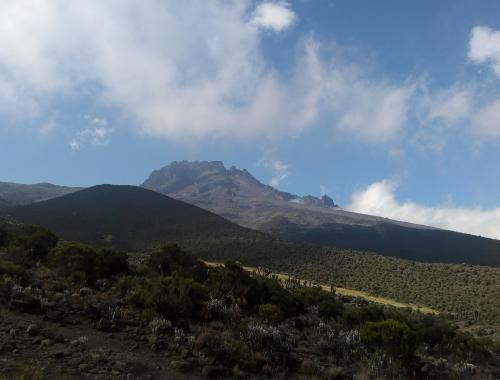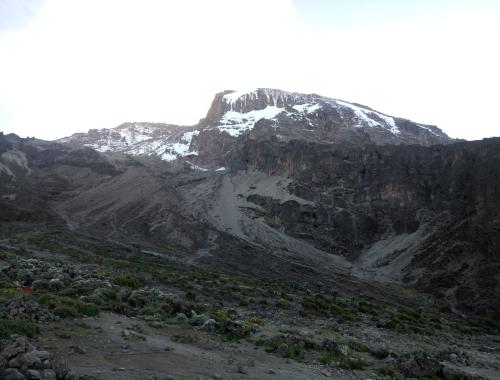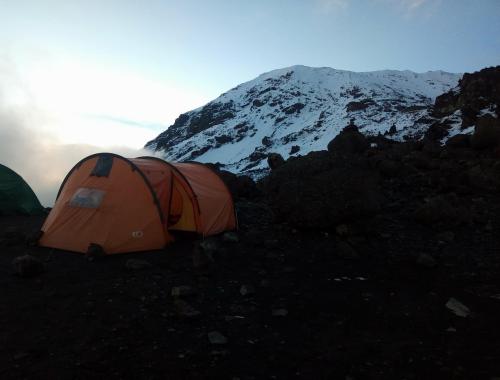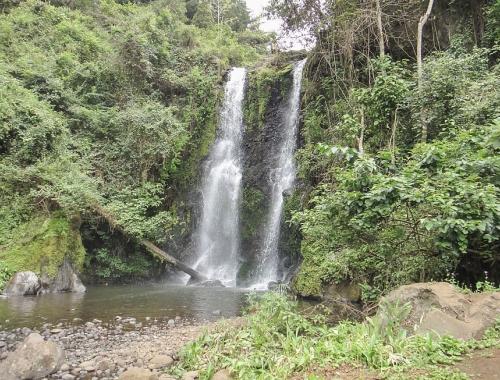Trekking
Trekking is a special way to explore nature by walking slowly through forests, hills, mountains, and valleys. It is not only good exercise but also a deep and peaceful way to connect with the land, animals, and people. Tanzania is one of the best places in Africa for trekking because it has beautiful landscapes, friendly local cultures, and rich wildlife.
Whether you want to climb a mountain, walk in national parks, or explore small villages, Tanzania has something for everyone. In this guide, we will learn what trekking is, where to do it, what to expect, and how it makes your travel experience more exciting and meaningful.
What Is Trekking?
Trekking means walking for long distances in natural areas. It usually takes several hours or even days, and the paths may go through mountains, forests, grasslands, or remote villages. Trekking is not a race. You walk slowly, look around, enjoy the views, and experience the world around you.
Trekking is different from normal walking because:
-
You go deeper into nature, often where cars cannot go.
-
You may camp overnight or stay in simple lodges.
-
You carry water, food, and gear with you.
-
You are guided by trained people who know the area.
It is a peaceful, healthy, and educational activity that many people love during their visit to Tanzania.
Why Trek in Tanzania?
Tanzania is famous for wildlife safaris and Mount Kilimanjaro. But it is also a dream for trekkers because of:
-
Variety of Landscapes – mountains, valleys, forests, grasslands, and lakes
-
National Parks – protected areas full of animals, birds, and plants
-
Cultural Routes – where you meet local tribes like Maasai or Chagga
-
Great Weather – sunny most of the year, with cool breezes at high places
-
Experienced Guides – trained rangers and locals who guide you safely
-
Peace and Quiet – most trekking areas are calm and away from city noise
Trekking in Tanzania lets you see the land from a different view—on foot, up close, and slowly.
Popular Trekking Destinations in Tanzania
Let’s explore the best places in Tanzania for trekking, from mountains to forests and valleys.
🏔️ 1. Mount Kilimanjaro Trekking
Kilimanjaro is the highest mountain in Africa (5,895 meters). It is a world-famous trekking destination. Many people dream of reaching the snow-covered summit.
-
You do not need to be a mountain climber to trek Kilimanjaro.
-
You walk slowly (“pole pole” in Swahili), and guides help you adjust to high altitudes.
-
There are different routes (Marangu, Machame, Lemosho, Rongai).
-
The trek takes 5 to 9 days depending on the route.
-
You pass through rainforests, moorlands, alpine deserts, and glaciers.
Kilimanjaro trekking is hard but very rewarding. Many people say it is the adventure of a lifetime.
🏞️ 2. Mount Meru Trekking
Mount Meru (4,566 meters) is in Arusha National Park. It is smaller than Kilimanjaro but still high.
-
The trek takes 3 to 4 days.
-
You walk through forest, grasslands, and rocky slopes.
-
You see many animals like giraffes, monkeys, and buffaloes.
-
The final climb is steep but offers amazing views of Kilimanjaro.
Mount Meru is good for people who want a shorter and less crowded trek.
🌿 3. Udzungwa Mountains Trekking
Located in Udzungwa Mountains National Park, this area is full of waterfalls, forests, and rare animals.
-
No vehicles are allowed inside; trekking is the only way.
-
You can take short treks (like 3-5 hours to Sanje Waterfall) or multi-day treks.
-
You see rare monkeys, birds, and butterflies.
-
The trails go through lush rainforests and quiet hills.
Udzungwa is called the “African Galápagos” because it has many unique species.
🐘 4. Ruaha and Nyerere National Parks
These parks are famous for wildlife. While trekking is not the main activity, you can join guided walking safaris that feel like short treks.
-
You walk with an armed ranger for safety.
-
Learn animal tracking skills.
-
See elephants, lions, birds, and more.
-
Enjoy a peaceful experience in the bush.
These treks are perfect for people who love both wildlife and nature walks.
🛖 5. Cultural Treks in Ngorongoro and Lake Eyasi
These treks are special because they connect you with local people and traditions.
-
Trek across Maasai lands, highlands, and small farms.
-
Visit villages, schools, and meet local families.
-
Walk with Hadzabe hunter-gatherers near Lake Eyasi.
-
Sleep in tents or local homestays.
Cultural trekking is good for learning local life and supporting communities.
🦓 6. Longido and Monduli Trekking
Close to Arusha, these small hills and villages offer beautiful half-day or full-day treks.
-
Perfect for beginners or people with less time.
-
Trek through open grasslands, acacia trees, and Maasai homesteads.
-
See giraffes, zebras, and antelopes.
-
Enjoy sunset views and local dances.
What to Expect During a Trek
A trekking day in Tanzania usually starts early. You walk for several hours, stop to rest, eat lunch, and continue until evening. Some treks are short, and others are long.
During trekking:
-
You move slowly, enjoying nature around you.
-
Guides lead the way, showing you plants, animals, and stories of the land.
-
You sleep in tents, huts, or local lodges depending on the route.
-
Food is prepared for you, often hot meals with tea and fruits.
-
Porters may carry your big bags during longer treks.
What You Need to Bring
Trekking needs the right clothes and gear to stay safe and comfortable. Here’s a basic list:
-
Good walking or hiking boots
-
Comfortable clothes (layers for warm and cool weather)
-
Hat, sunscreen, and sunglasses
-
Raincoat or poncho
-
Reusable water bottle
-
Snacks and energy bars
-
Walking stick (optional)
-
Headlamp or flashlight
-
Sleeping bag (for longer treks)
-
Camera or phone
-
Small backpack for daily use
Guides usually carry first-aid kits and other safety items.
Benefits of Trekking
Trekking is not only fun. It’s also healthy and helpful for you and the environment.
👍 Health Benefits
-
Builds strong muscles and heart
-
Reduces stress and improves mood
-
Helps with sleep and mental peace
-
Good for all ages with different difficulty levels
🌍 Environmental Benefits
-
Low impact on nature
-
No cars, no pollution
-
Encourages people to protect wild areas
💙 Cultural Benefits
-
Supports local guides and villages
-
Teaches respect for other ways of life
-
Helps protect cultural heritage
Tips for Trekking
-
Plan with a Tour Company
-
Choose licensed, experienced guides
-
They handle transport, food, and safety
-
-
Start Slow
-
Give your body time to adjust, especially at high altitudes
-
-
Respect Nature and People
-
Do not litter
-
Ask before taking photos
-
Follow your guide’s instructions
-
-
Stay Hydrated and Eat Well
-
Drink plenty of water
-
Carry fruits and snacks
-
-
Listen to Your Body
-
Take breaks
-
Tell your guide if you feel tired or sick
-
Best Time for Trekking
Trekking in Tanzania is best during the dry seasons:
-
June to October – cool, dry, and clear skies
-
January to February – short dry season with warm weather
Avoid March to May, the long rainy season. Trails are muddy, and some areas may be closed.
Trekking in Tanzania is more than just walking. It is a beautiful way to explore nature, culture, and yourself. Every step takes you deeper into the heart of Africa—through mountains, forests, villages, and wild lands. Whether you want to climb Africa’s highest mountain, walk with elephants, or visit a village where people still live the old way, trekking gives you time to see, feel, and understand.





